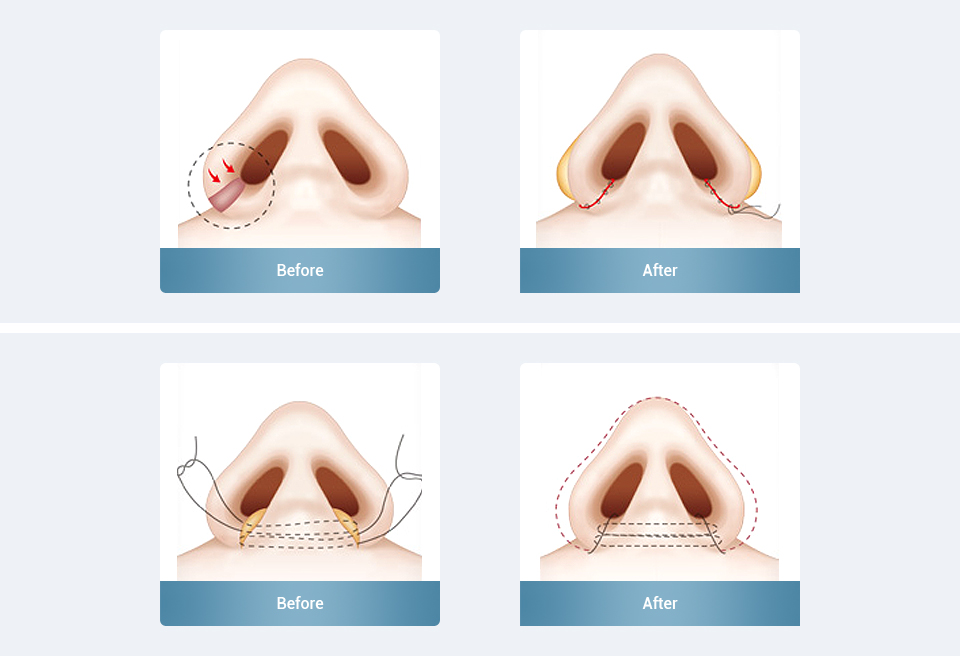This surgery is for those who want a more prominent nasal bridge with a more projected and defined tip.
The increased height of the nasal bridge allows more definition from the frontal view and offers a more sleek and sophisticated
profile line. Common materials for implants for nasal bridge augmentation include Silicone and Goretex. The nasal tip often
requires concomitant definition as well during this procedure and tip-plasty is often performed with the patient’s own cartilage,
harvested from the nasal septum or ear.

Flat nose
 > Rhinoplasty > Flat nose
> Rhinoplasty > Flat nose
- Surgical
information - Surgery duration1-2 hours
- AnesthesiaSedation or
General anesthesia - HospitalizationNot required
- Clinic follow up2 times
- Recommended
local stay (in Korea): 1 week
NJH Rhinoplasty (Nose Surgery)
Cosmetic nose surgeryis a highly individualized procedure thatcan improve the appearance and proportion of the nose. It can alter
various aspects of your nose including the size, width, height, nasal tip, nostrils and profile of the nose, enhancing facial harmony and
self-confidence. Nose surgery may also address functional aesthetic issues to correct breathing problemsand structural abnormalities.
NJH Plastic Surgery Clinic offers refined cosmetic nose surgery techniques that can positively transform the most defining characteristic
of the face, and improve overall facial harmony.
various aspects of your nose including the size, width, height, nasal tip, nostrils and profile of the nose, enhancing facial harmony and
self-confidence. Nose surgery may also address functional aesthetic issues to correct breathing problemsand structural abnormalities.
NJH Plastic Surgery Clinic offers refined cosmetic nose surgery techniques that can positively transform the most defining characteristic
of the face, and improve overall facial harmony.
NJH Rhinoplasty
(Nose Surgery)
- Careful preoperative analysis
- with genioplasty! - Refined technical execution of
the surgical plan - Patient safety
1:1 Patient
: anesthesiologist, 24/7 on-call anesthesiologist - Thorough postoperative care
Surgical procedure
-
Closed rhinoplasty
When performing nose surgery using the closed
technique, incisions made to access the underlying
nasal structures are hidden inside the nose.
The closed approach is appropriate when changes
are sought to alter the nasal dorsum (such as dorsal
augmentation) but not for tip-plasty, in which case an
open procedure is more indicated which allows for
more accurate and précised modification -
Open rhinoplasty
The incision is made across the columella which is
the tissue separating the nostrils. Through this
approach, the underlying nasal structures are visible
to the surgeon. This approach offers great precision
and fine surgical techniques to alter various aspects
of the nasal structures to achieve the desired results
depending on your specific desires.
Materials
| Autologous tissue | Artificial prosthesis |
|---|---|
|
|
NJH Rhinoplasty (Nose Surgery)
Flat nose
- Dorsal bridge augmentation
- Tip refinement and projection
Before
After
Tip plasty
Through this procedure, the size and the shape of the nasal tip may be projected, reduced or refined. The nose, which is centered on the
face, is one of the most noticeable features. Tip refinement can correct an undefined nasal tip or correct a boxy and bulbous tip.
Tip plasty can create a dramatic improvement of the overall facial aesthetic
face, is one of the most noticeable features. Tip refinement can correct an undefined nasal tip or correct a boxy and bulbous tip.
Tip plasty can create a dramatic improvement of the overall facial aesthetic
- Tip augmentation and projection
- Tip refinement
- Tip rotation
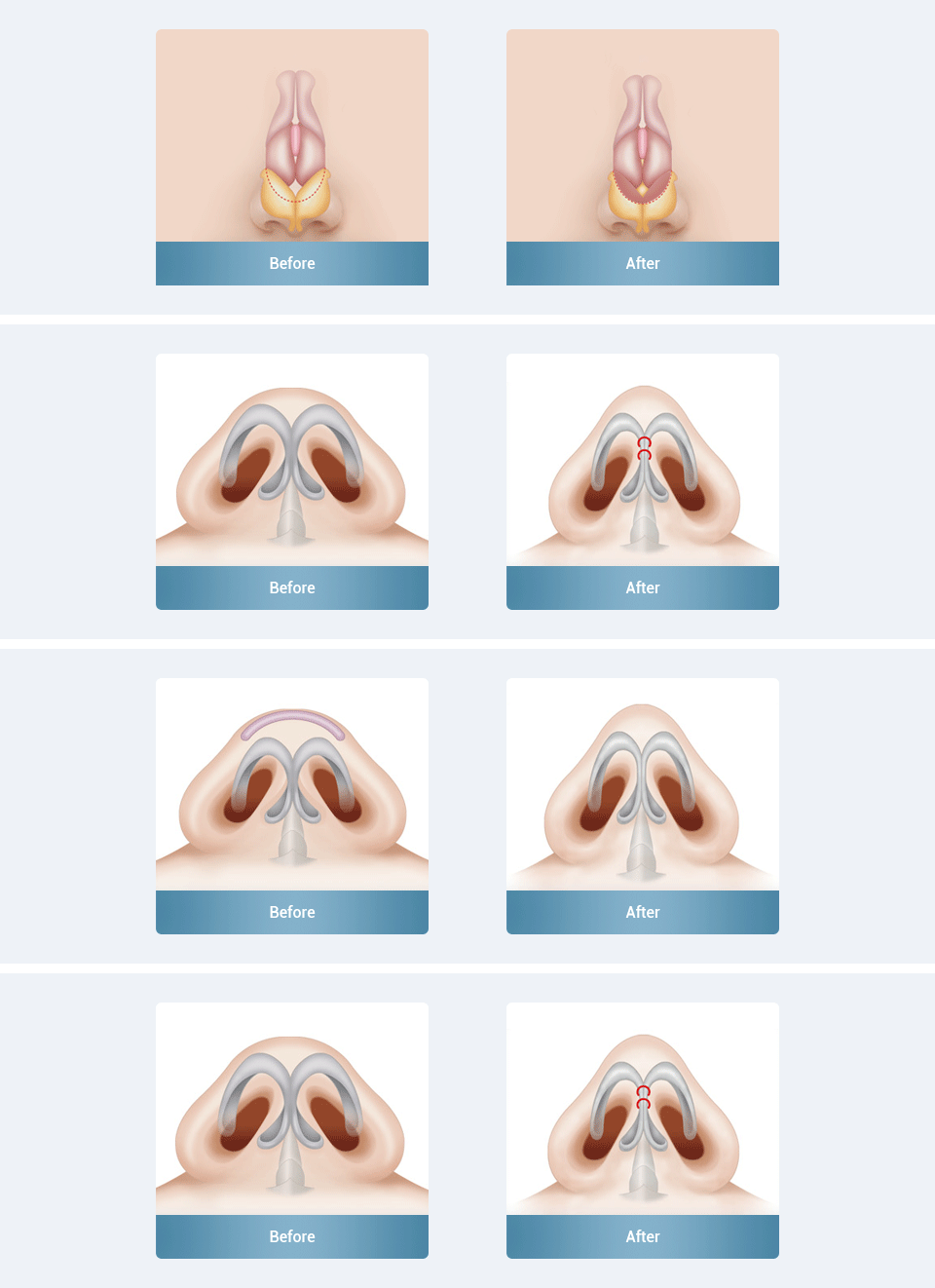
Dorsal hump
Through this procedure, the size and shape of the dorsal hump can be reduced to produce a smoother and more femininely contoured
profile. The dorsal bridge is composed of bone in its upper third and cartilage in the lower two-thirds. The hump may be comprised of
bone and/or cartilage and precise analysis allows for better results. In some cases, dorsal hump reduction may be accompanied with
augmentation rhinoplasty and tip plasty to create a more defined look
profile. The dorsal bridge is composed of bone in its upper third and cartilage in the lower two-thirds. The hump may be comprised of
bone and/or cartilage and precise analysis allows for better results. In some cases, dorsal hump reduction may be accompanied with
augmentation rhinoplasty and tip plasty to create a more defined look
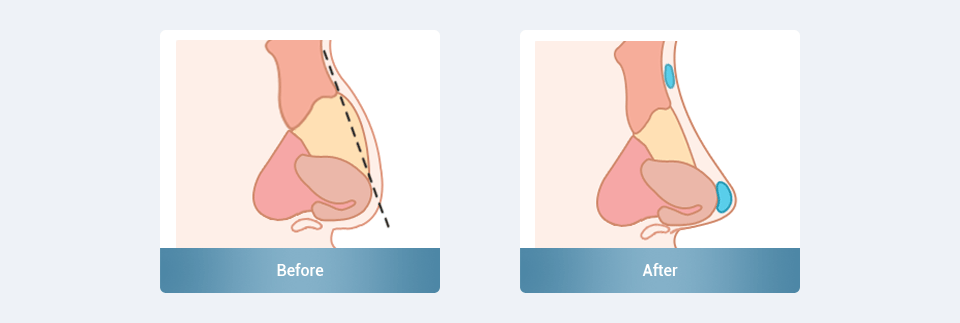
Wide nose
A wide nose can be corrected by repositioning the bone forming the bridge of the nose through nasal osteotomies, which allows the
nasal bones to come closer together. At times, dorsal height augmentation can create the optical illusion of narrowing. Through this
procedure, the nose size is brought to a more favorable balance with the rest of the face.
nasal bones to come closer together. At times, dorsal height augmentation can create the optical illusion of narrowing. Through this
procedure, the nose size is brought to a more favorable balance with the rest of the face.
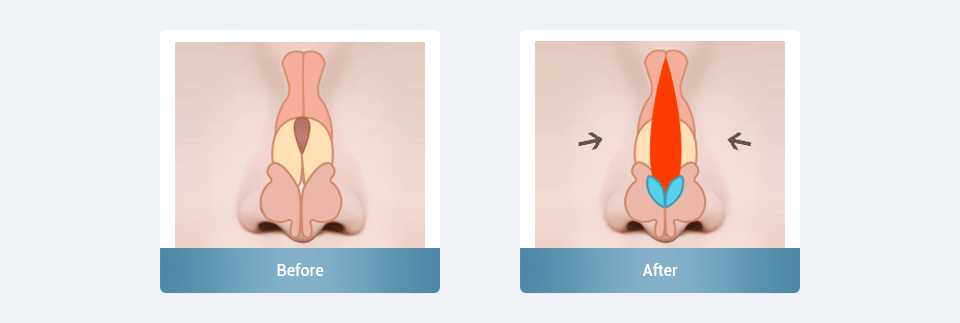
Crooked / deviated nose
To correct crooked, or deviated nose, an accurate preoperative diagnosis and analysis must be undertaken to formulate an appropriate
surgical plan. In many cases, patients who seek to correct their crooked nose often also have functional issues as well (such as breathing
obstruction) due to associated anatomical abnormalities such as septal deviation. In cases of bony deviation, osteotomies of the nasal
bone are done to mobilize and straighten the crooked nasal bones.
surgical plan. In many cases, patients who seek to correct their crooked nose often also have functional issues as well (such as breathing
obstruction) due to associated anatomical abnormalities such as septal deviation. In cases of bony deviation, osteotomies of the nasal
bone are done to mobilize and straighten the crooked nasal bones.
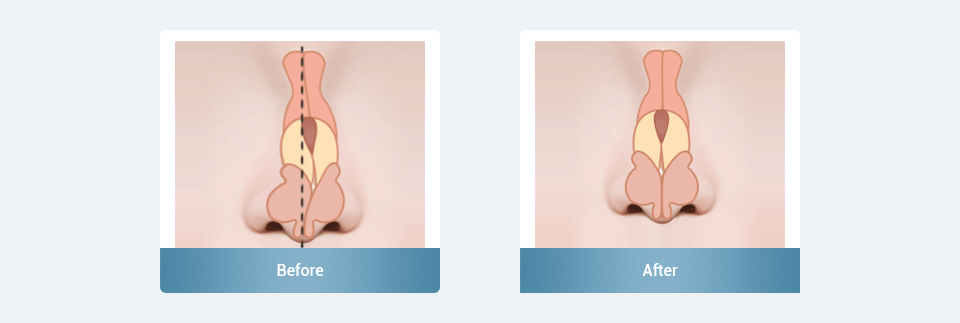
Short nose
This procedure is to correct a nose that is proportionally too short in relation to the face. A shor nose (or upturned nose) can occur as a
sequelae from previous rhinoplasty or congenitally. The cause of nasal foreshortening must be addressed to select an appropriate
surgical plan and prevent relapse.
sequelae from previous rhinoplasty or congenitally. The cause of nasal foreshortening must be addressed to select an appropriate
surgical plan and prevent relapse.
- Cartilage grafts
- Caudal septal extension grafts
- Extended spreader grafts
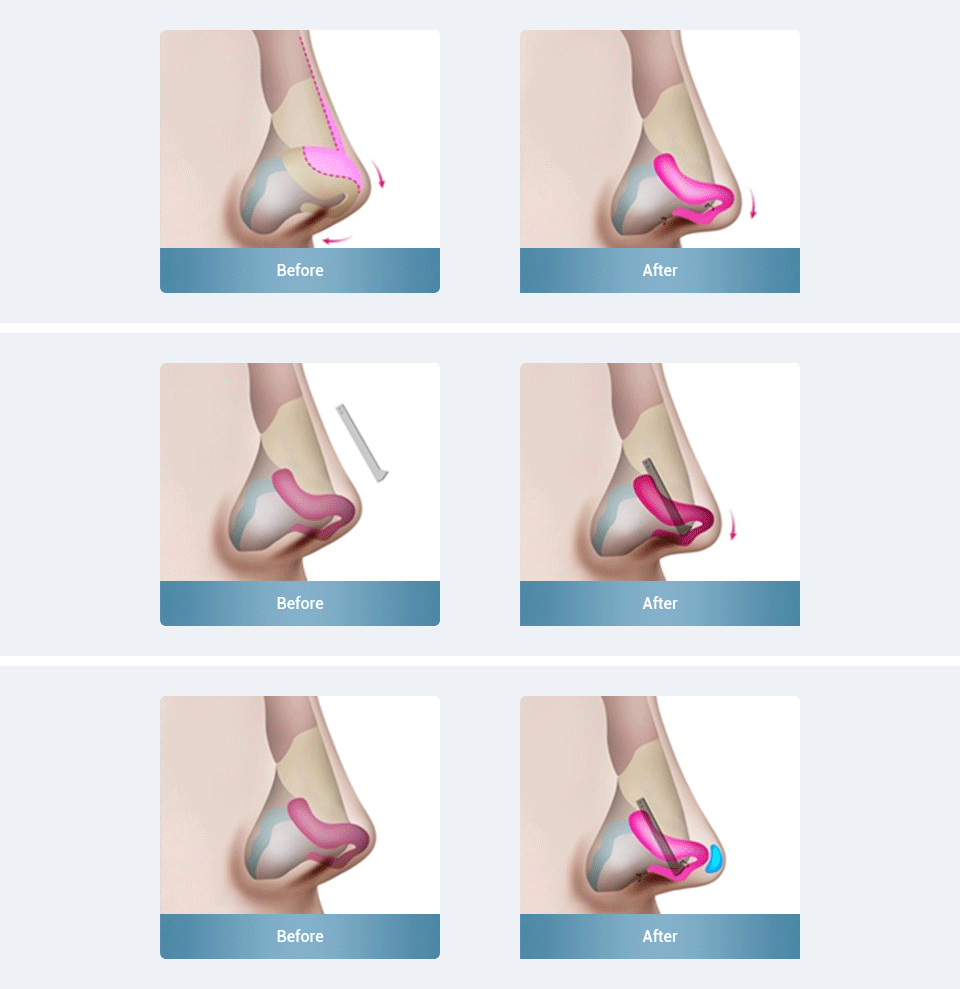
Long nose
A droopy nasal tip or long nose can be corrected by repositioning the nasal tip in a more upturned or rotated position. The weakened
cartiligionous tip supporting elements must be strengthened.
cartiligionous tip supporting elements must be strengthened.
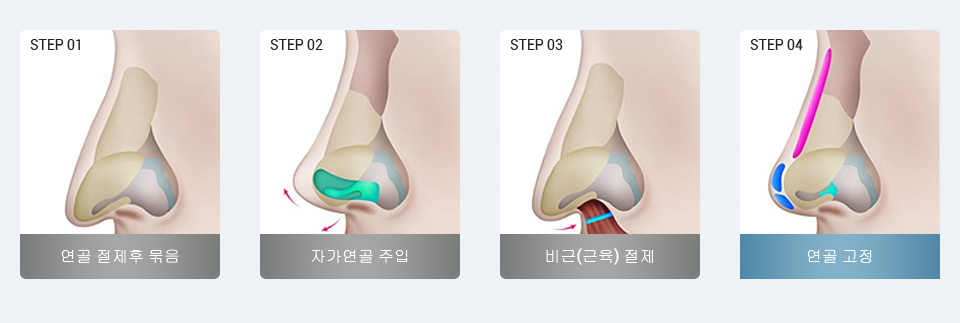
Alar reduction
Through alar reduction, the size of the nostrils can be narrowed to give the nose a more aesthetic and proportionate balance.
